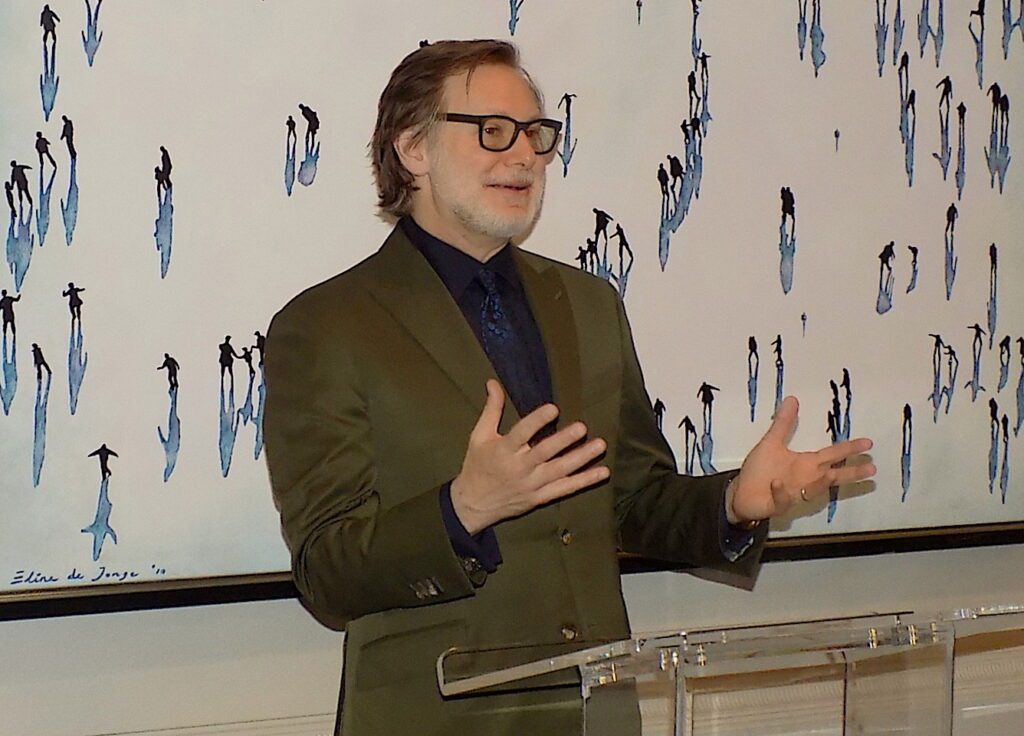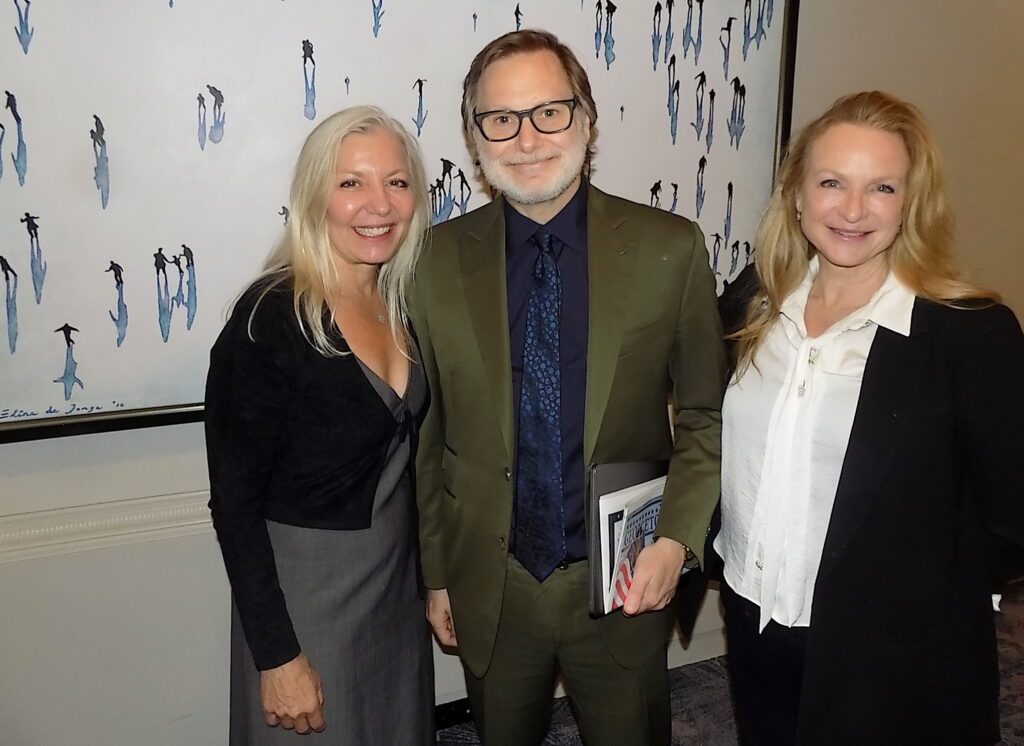New Phillips Director Inspired by Duncan
By • June 26, 2023 0 1831

A guiding principle of art critic Duncan Phillips, founder of the Phillips Collection, was to acquire a “unit” of work by important late 19th– and 20th-century painters, notably Paul Cézanne, Pierre Bonnard, Paul Klee and Georges Braque.
What is meant by a unit? According to Dr. Jonathan P. Binstock — since March 1 the museum’s Vradenburg Director and CEO, speaking at The Georgetowner’s June 22 cultural power breakfast — a unit is a group of works, possibly but not necessarily from different periods, that collectively convey the artist’s vision.
The signature example is the Phillips’ famed Rothko Room, a small gallery with a major painting by Mark Rothko on each wall. Many breakfast attendees raised their hands when asked if they had been to this meditative space, the first in a U.S. museum devoted to the Abstract Expressionist, who collaborated on its creation.
To get a firm grasp on that concept and others, the Phillips will launch a strategic planning process this fall at a retreat themed “Going Deep With Duncan.” By discussing “what aspects of his legacy are relevant,” the museum’s board and staff will be “engineering the historic perspective to lead to a vision of the future,” explained Binstock, who previously led the University of Rochester’s Memorial Art Gallery.
“There are these aspects of what he stood for that I find inspiring today,” he added, giving the example of Duncan Phillips’s intellectual humility. “Here’s a person who didn’t think he had all the answers,” Binstock commented. “I think that that’s really rare.”
A response to the deaths of Duncan Phillips’s father and brother, the museum was originally called the Phillips Memorial Art Gallery. Shortly after marrying painter Marjorie Acker in 1921, this conservative heir to steel and window-glass fortunes, Yale ’08, opened the door to his family’s Dupont Circle mansion — “in his tweed suit,” said Binstock — and invited the public in.
Binstock, who wrote his University of Michigan Ph.D. dissertation on D.C.-based painter and sculptor Sam Gilliam, organizing the first Gilliam retrospective in 2005 as the Corcoran Gallery’s curator of contemporary art, made the case that the Phillips Collection’s long-standing support for Black artists was unique.
Introduced to painter Jacob Lawrence by Greenwich Village art dealer Edith Halpert, Duncan Phillips bought 30 of the 60 panels of Lawrence’s “Migration Series” in 1942 (the other 30 were acquired by the Museum of Modern Art). He also purchased and exhibited works by other Black artists, sometimes lending them to the Howard University-connected Barnett-Aden Gallery. Black artists felt welcome at the Phillips Collection, as they often did not elsewhere in segregated, mid-20th century Washington, according to Binstock.
The current exhibition at the Phillips, on view through Sept. 3, is “Frank Stewart’s Nexus,” showing work by Stewart, a staff photographer at Jazz at Lincoln Center for 30 years. On Aug. 17, the museum will host a conversation between Stewart and Hortense Spillers of Vanderbilt University, introduced by poet Fred Moten, the show’s guest curator.
Binstock credited his predecessor, Dr. Dorothy Kosinski, now director emerita, for expanding the collection and “opening the floodgates” to other media, especially photography, which now makes up about a third of the Phillips’ holdings.
The next special exhibition will be “African Modernism in America, 1947-67,” to be followed in February by “Bonnard’s Worlds,” co-organized with Fort Worth’s Kimbell Art Museum.
To a question about art by women in the collection, Binstock initially responded that “our largest unit is Marjorie Phillips.” The museum was the first to acquire paintings by Georgia O’Keeffe, in 1926, but Duncan Phillips had not referred to the nine O’Keeffes as a unit, he noted. Another name that came up was Renée Stout; the Phillips acquired three of her works in 2019.
Though early in his career, he said, “the Smithsonian American Art Museum sort of nurtured me and cultivated me and taught me how to be a museum professional,” Binstock called the intimately scaled Phillips “my favorite museum.” After some laughter from the audience at the Four Seasons Hotel, he asserted: “It’s always been my favorite museum.”

Georgetowner Publisher Sonya Bernhardt, the Phillips Collection’s Director and CEO Jonathan Binstock and Cynthia McKee of Balfour Palisades. Georgetowner photo.

